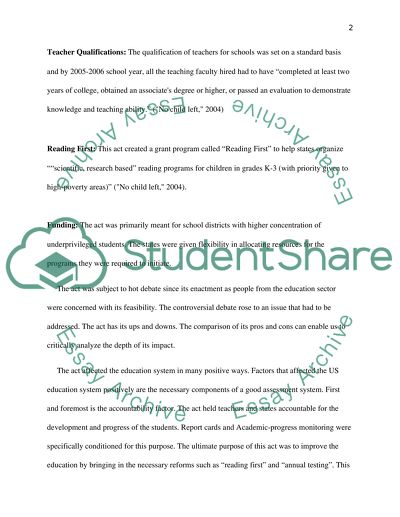The No Child Left Behind Act of 2001 and How It Affected Education Essay. Retrieved from https://studentshare.org/education/1440518-no-child-left-behind-and-how-it-affected-education
The No Child Left Behind Act of 2001 and How It Affected Education Essay. https://studentshare.org/education/1440518-no-child-left-behind-and-how-it-affected-education.


